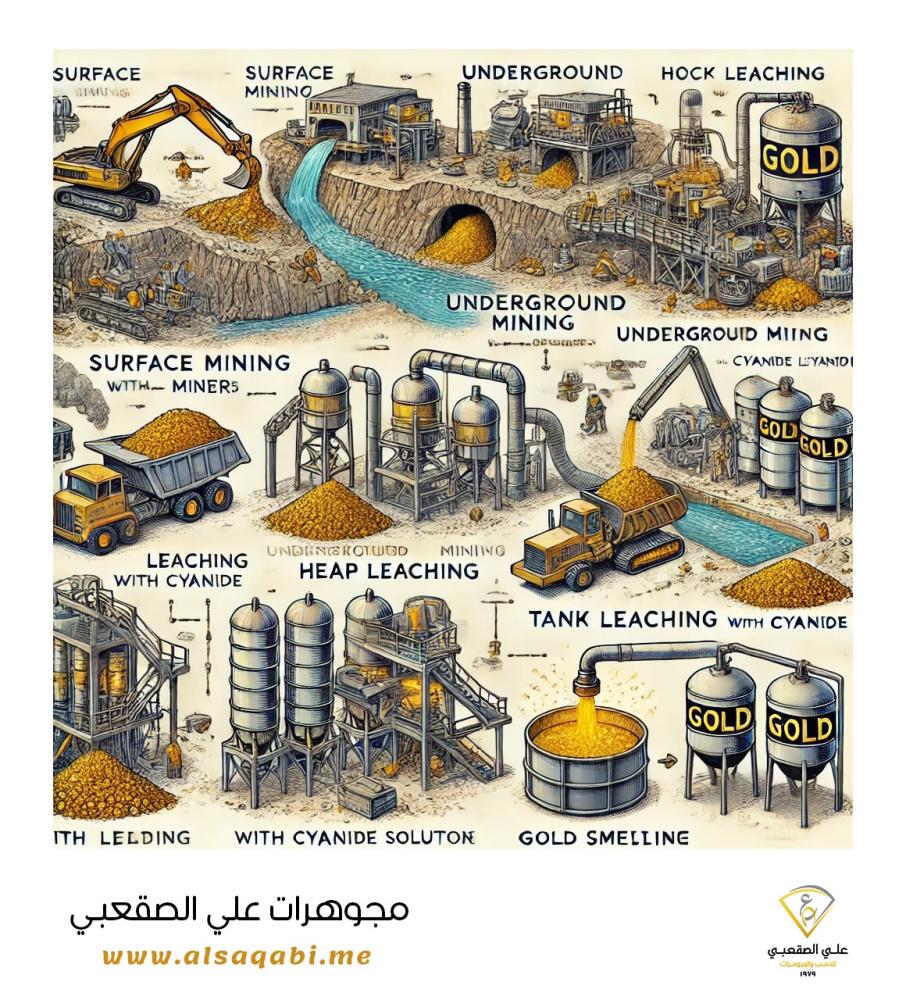
Extracting gold from the ground requires advanced techniques and a thorough knowledge of geology and chemical processes. There are several methods for extracting gold, including:
1. Traditional mining
A. Surface mining
- Prospecting : searching for gold ores in surface layers.
- Dredging : The use of machinery to extract gold from alluvial and clay deposits in rivers and streams.
b. Underground mining
- Tunnels : Creating underground tunnels to reach gold ores.
- Room and Pillar : Dig rooms, extract gold and leave columns to support the roof.
2. Crushing and grinding techniques
- Crushing : crushing large rocks to obtain smaller pieces.
- Grinding : grinding rocks into a fine powder to release gold particles.
3. Flotation
- Chemical treatment : Using chemicals to make gold particles float to the surface so they can be collected.
4. Leaching
A. Heap Leaching
- Raw piling : Placing crushed rock into large piles.
- Adding cyanide solution : Spraying cyanide solution on the piles to extract the gold.
B. Tank Leaching
- Adding raw materials to tanks : Placing the crushed raw materials into tanks.
- Adding cyanide solution : Adding cyanide solution inside the tanks to extract gold.
5. Cyanidation process
- Use of cyanide : Extracting gold using a cyanide solution that dissolves the gold from the ore.
- Carbon-in-Pulp : Using activated carbon to collect gold from cyanide solution.
6. Amalgamation process
- Use of mercury : Mixing gold with mercury to form an amalgam, then heating the amalgam to separate the gold.
7. Smelting operations
- Melting : Heating the ore in high-temperature furnaces to extract the gold.
8. Bioleaching
- Using bacteria : Some types of bacteria can extract gold from its ores through a biological process.
These methods vary in efficiency, cost and environmental impact, and the appropriate method is chosen based on the type of ore, its location and mining conditions.


